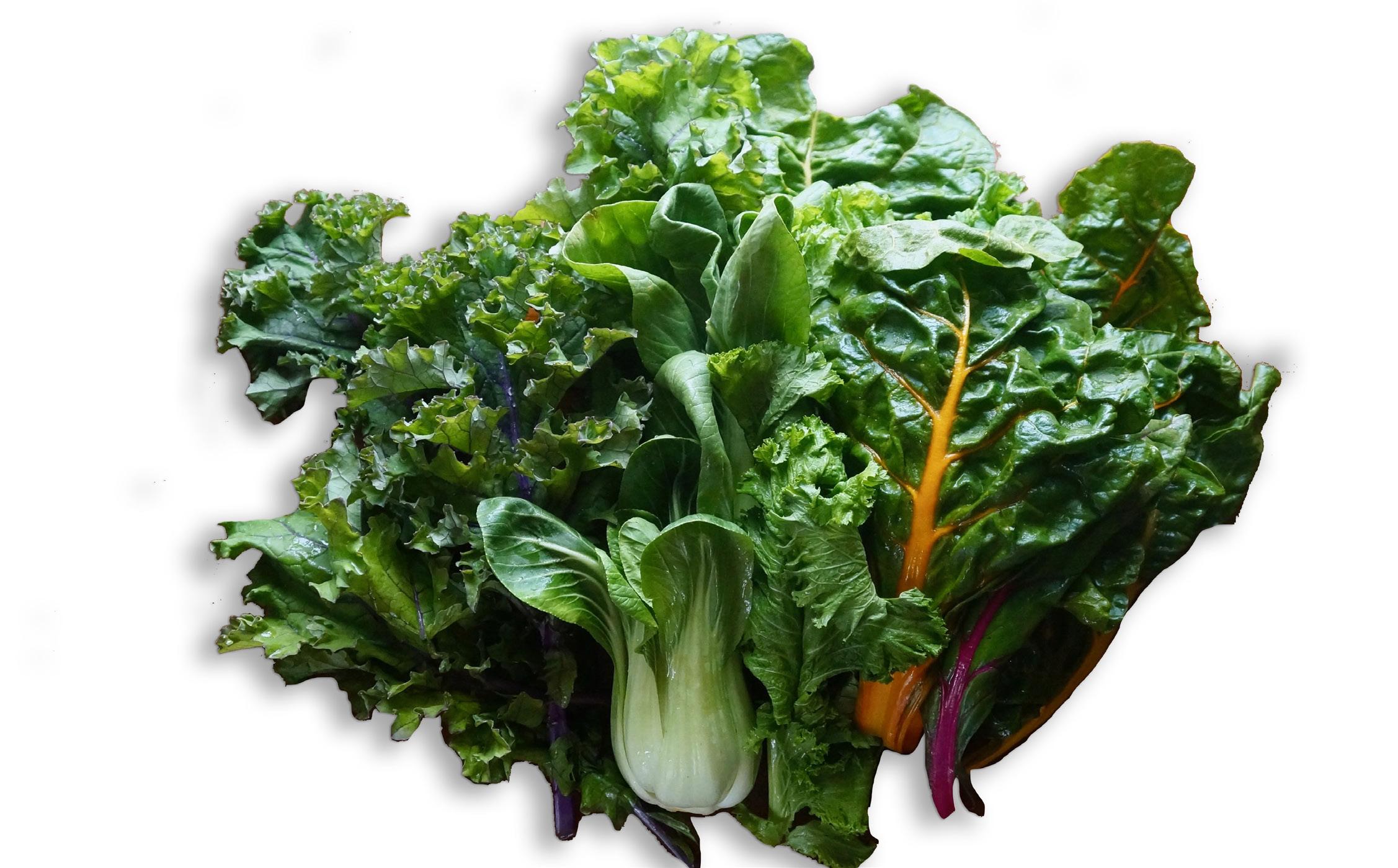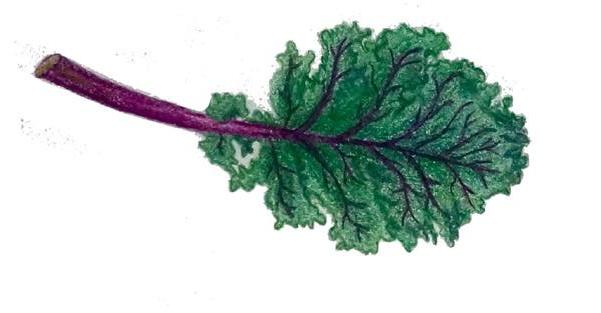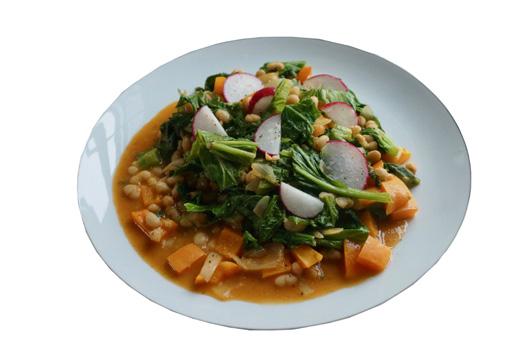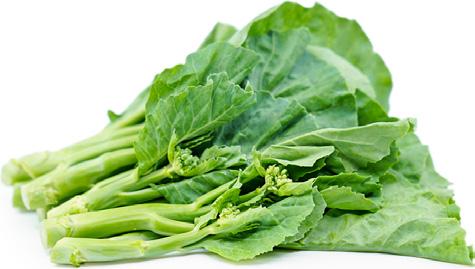
5 minute read
A Field Guide to Dark Leafy Greens
from Going Green
by Johanna Keigler
PHOTO: JOHANNA KEIGLER
Advertisement
The abundance of the leafy green world is glorious, but its diversity can be intimidating to an unfamiliar palette. My favorite greens include chard, mustard greens, bok choy, broccoli rabe, collards, and of course, kale. There are so many more varieties of leafy greens that I don’t have room for here: spinach, escarole, dandelion greens, turnip greens, cauliflower greens (don’t toss these away when you’re cooking cauliflower, just add them to the dish too!). I could write a guide on solely kale varieties, from the classic Curly Kale to the reptilian-looking Tuscan Kale to the bright Red Russian to the stoic broad-leafed Portuguese Kale.
My first experience with the cornucopia of leafy greens happened while working on a farm in California during March, which happens to be the season of dark leafy greens. The mustard greens there grew so abundantly, I’d eat a whole bunch sautéed and stuffed in a tortilla nearly every day. When prepared without attention to flavor and texture, dark leafy greens can leave much to be desired. But with a bit of thought (and a pinch of salt and squeeze of lemon), even bitter dandelion greens and tough collards––though eschewed by nearly every child––can be transformed into hearty yet bright additions to any meal.
The easiest way to cook any leafy green is to sauté it in oil with garlic for five minutes on medium heat. Splash in a soupçon of acidity––lemon juice or balsamic vinegar perhaps––and season with salt and pepper. Hearty greens hold strong flavors well, so add your favorite spices or hot sauce. They’re also lovely added to any soup or stew, five minutes before it’s done––just add the stalky parts earlier to give them time to soften.
Cooking up these dark leaves comes with lots of nutritional benefits, too. Many are rich in vitamins A, C, E, and K. Bok choy and mustard greens even contain some of the B vitamins, like folate. Leafy greens are a great source of calcium, and contain minerals like iron, potassium, and magnesium. Made up of cellulosic plant cells, hearty greens provide plenty of fiber, and dark green leaves are also high in cancer-preventing antioxidants (USDA).


The star of leafy greens, kale, has become ubiquitous in the superfood scene. This often-tough green can handle soups, pasta-bakes, and stir-fries.
With some care, it’s also scrumptious raw. Eaten raw, kale must be massaged: tear the leaves off their ribs (save these for cooking), add a bit of olive oil and salt, and knead the leaves with your hands to soften and reduce bitterness.
In a raw salad, kale holds creamy dressings well and won’t get soggy overnight. This tougher green makes for a hearty salad with root veggies and grains, like wild rice. Add some citrus or dried fruit to complement kale’s strong earthiness. Chard and beet greens are more tender than kale; so it’s best to add them near the end of cooking, like spinach. They add zing with their bright yet mildly earthy flavor and crunchy, colorful stems.
These strong-flavored greens pair well with white beans in a comforting greens-andbeans soup. Sauté a base of onions, garlic, and celery with salt and oil. Add any additional veggies or herbs and a hot pepper, and pour in canned beans or cooked lentils and broth. Let it all simmer, then throw in the chard or beet greens for just a couple minutes to wilt. Sprinkle lemon juice into each bowl to brighten up the flavour.

BOK CHOY & TATSOI COLLARD GREENS BROCCOLI RABE & GAI LAN
These spicy, powerful greens will add a kick to any meal. Slightly more tender than kale, mustard greens are lovely simmered in an ample amount of quality oil with garlic,plenty of salt, and a splash of vinegar, to top any grain or even toast.
A great way to eat powerful mustard greens is in a soft taco, paired with some beans and hearty veggies. To make mustard green and beet tacos, dice and separately toss both in oil and warming spices––like chili powder, cumin, lots of garlic, oregano, salt and pepper. Then roast beets at 400°F (200°C) for around 20 minutes until they’re tender, and toss in the greens for the last five. Scoop this mixture onto warm taco shells with some pinto beans, any crunchy raw veggie you have on hand, and perhaps a creamy aioli.

These tender, relatively mild greens can be treated like spinach, despite their thicker, juicy stalks. Eat them chopped and raw in a salad, or stir them into any stove-top dish.
Bok choy and tatsoi work beautifully in a classic stir fry flavored with ginger, soy sauce, and sesame oil. First, sauté up any veggies you have on hand––garlic, green onions, peppers, carrots––and stir in the chopped greens a few minutes before you’re done. Serve over steamy rice or your favorite grain and top it all with sprouts or chopped peanuts for crunch. Bok choy and tatsoi are also delicious in almost any soup - especially mushroom-based ones-or a lentil curry. A key ingredient in traditional southern food and a perfect substitute for a tortilla in any wrap recipe, these tough greens can really hold their own in hearty, flavorful dishes - both raw and cooked.
Collard greens can be simmered for a while without losing their integrity. Try cooking them first in oil with shallots, garlic, and salt. Then simmer the mixture in coconut milk with warming spices like a cajun blend, curry, or chili. Add chickpeas for a filling, protein-rich main, squeeze a slice of lime to brighten, and top with chopped roasted nuts for a little crunch. Broccoli Rabe (Rapini) and Gai Lan (Chinese Broccoli) are peppery, bitter, stalky greens. They’re best steamed for a couple minutes or blanched for a few seconds to brighten and draw out some bitterness.
These strong greens complement creamy pasta perfectly. Blanch them in boiling water for 30 seconds, then drain. Cook pasta while sautéing onions, mushrooms, and garlic. Add the stems and flowers to the pan a few minutes before the leaves. Pour in cream, season with salt and pepper, and stir in pasta. For a dairy-free version, blend up soaked cashews with non-dairy milk and nutritional yeast in place of the cream.










